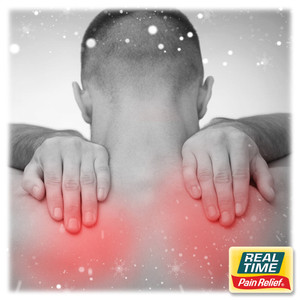8 Tricks to Reduce Your Back Pain
22nd Jun 2022
Tired of dealing with back pain? Here are 8 tricks to help you get relief! We have all experienced back pain in one way or another throughout our lifetimes. It is actually the most reported pain in all of America. In fact, 80% of all people will suffer from back pain at some point in time. Some people suffer from occasional back pain that simply causes discomfort while others experience chronic pain that can disable them from their daily activities. And although it is incredibly difficult to identify the cause of back pain, there are various ways to manage it and to prevent it from getting worse.
Here are some do’s and don’ts to remember when dealing with back pain:
Do:
-Focus on Your Bed:
According to experts, a firmer mattress is ideal for back health, regardless at how comfortable a soft one may feel at first. For long term comfort, choose support! Also, it is recommended to flip and inspect your mattress twice a year. If it is older than 5-7 years old, it may even be time to turn it in for a new one!
-Sit Smart:
How do you usually sit? Do you use chairs that support your middle and lower back? Are your shoulders upright and squared or are they rounded forward? All of these factors come to play in preventing, treating, and living with back pain. A few tips: position your knees at a 90 degree angle and maintain a neutral position in your spine. You may want to use a footrest as well. According to Lauren Polivka, PT, DPT, a physical therapist in Washington DC, “If the balls of your feet are supported on something, it makes it easier to rest on the ‘sit bones’ deep in your glutes, which helps unload your spine.”
-Alternate Ice and Heat:
While everyone is different, the application of ice and heat alleviates different aspects of back pain. Cold packs, which can be simply some ice cubes or a bag of frozen veggies wrapped in a thin cloth, helps combat inflammation and swelling. You may try this several times a day, but never more than 20 minutes at a time. Heat therapy includes using a heating pad, hot water bottle, or even a hot bath. These methods are used for reducing muscle spasms, cramping, and tension. This helps relax your muscles and increase blood flow in the affected area.
-Stay Hydrated:
Our bodies are composed mostly of water, right? But did you know that the discs in between our vertebrae are filled with water also? In that case, it makes a lot of sense that back pain is aggravated when you’re dehydrated. Drinking 8 cups of water a day has been the general recommendation but has been proving to be a false representation of what our bodies may really need. Because we are all so different, try drinking twice the amount of water you need to quench your thirst.
-Stretch It Out:
Strengthening and stretching your muscles helps reduce and, in some cases, eliminate back pain. Remember to start slow to ensure you do not aggravate the issue. Yoga is a great example. Studies found in The Clinical Journal of Pain supports yoga’s ability to reduce chronic lower back pain. In conjunction with building strength, loosening tight muscles, and increasing range of motion, yoga is an appropriate therapeutic approach to combat back pain.
Now for the Don’ts…
-Don’t Over Rest:
It is a common misconception that you must rest for your back to heal. However, it is quite the opposite. If you come to a point where you must rest to recover, you should not rest for more than a couple days before starting gentle movements again. Be sure to do what you feel most comfortable with whether it be swimming, walking, or yoga. Any kind of movement is better than none when it comes to treating back pain!
-Sleep on Your Stomach:
This is the worst position for your back for a number of reasons. Laying on your stomach forces your neck to stay rotated and therefore altering your spine’s position. That’s not how you should sleep! Try sleeping on your side with a pillow between your knees or on your back with a pillow under knees instead.
-Sit for Long Periods of Time:
Sitting without getting up and moving around periodically causes your hip flexors to shorten and your shoulders to round forward. Both of these things put unnecessary pressure on your spine. Instead, try to get up for 20 minutes every couple of hours at the very minimum.
For over 20 years, families across the U.S. have turned to Real Time’s lotions and creams for PAIN RELIEF YOU CAN TRUST®. From Lifestyle Essentials, through our Nujuvena line, to Pain Relief Formulas, Real Time has you covered.
LEARN MORE
Sources:





